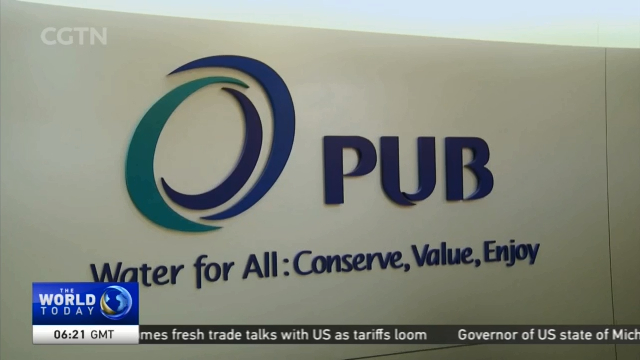
15:04, 14-Sep-2018
Neighbors Wrangle over Water: Singapore seeks solutions should Malaysia turn off tap
Updated
14:58, 17-Sep-2018
04:21

Singapore imports more than half of its water from neighboring Malaysia under a 1962 agreement that will end in 2061. Malaysian Prime Minister Mahathir Mohamad recently suggested a price hike of more than ten times. The comment has put Singapore's water security in the spotlight. CGTN correspondent Miro Lu speaks to leading expert Professor Asit Biswas about Singapore's water management.
Situated near the equator, Singapore has plenty rainfall. But the city-state that's about half the size of Los Angeles lacks the space to collect and store all the rain that falls on it. Although rain that falls on two-thirds of Singapore's land area is channelled to its 17 reservoirs thanks to a network of drains, canals and rivers, local catchment alone is far from enough to support the needs of one of the best developed economies in the world. Over the years, Singapore has developed other means of water supply. It now has five NEWater Plants where they turn sewage water to drinking water, and two desalination plants. Together, these two taps could supply half of the country's water demand. But, the easiest and cheapest tap is still imported water from Malaysia. Singapore imports water from Johor, a state in southern Malaysia linked to Singapore by causeway, under the 1962 Water Agreement, which allows Singapore to draw up to 250 millions of gallons of water per day from the Johor River until 2061. Professor Asit Biswas, who is widely acknowledged to be one of the world's leading authorities on water and environmental management, said when the Malaysia tap turns off, the chances of a water shortage happening will largely depend on Singaporeans.
ASIT K. BISWAS, DISTINGUISHED VISITING PROF.
LEE KUAN YEW SCHOOL OF PUBLIC POLICY
"Does Singapore have a long-term water problem? It will not have a water problem provided that Singaporeans use reasonable quantity of water, Singaporean industries use reasonable amount of water, unfortunately neither of that is the case now. Right now, (Singaporeans consume) 143 litres per person per day. In 1960s, Singapore did an almost 10-year study to see how much water an average Singaporean need to lead a healthy productive lifestyle, and the answer was 75 litres."
Professor Biswas has been a senior advisor to 19 governments. He told me how São Paulo was hit hard by its worst drought in history in 2014 and how it managed to educate its people and brought down per capital water consumption from 145 litres to 120 litres within a year. He said Singapore's water policy of Four National Taps - water from local catchment, imported water from Malaysia, NEWater and desalinated water - has diversified and strengthened the country's water supply. But more can be done.
ASIT K. BISWAS, DISTINGUISHED VISITING PROF.
LEE KUAN YEW SCHOOL OF PUBLIC POLICY
"We proposed Singapore should have five taps. Four taps to expand supply, the fifth tap would be the reverse, how do you reduce demand. That is also expanding supply because if you reduce the demand you have more water to use it for other places. Singapore has done a lot to reduce demand through technological means, not enough through behaviour means, and this is what it needed."
MIRO LU
SINGAPORE
"In Singapore's 50 years of independence, it has turned its water vulnerability into a strategic asset. PUB, Singapore's National Water Agency, expects total demand for water to double by 2061, when the water agreement with Malaysia will end. While no one doubts its capability in shoring up supply to keep the water flowing, some say more emphasis should be put on reducing the demand and encouraging water use to be more sustainable and more efficient. Miro Lu, CGTN, Singapore."

SITEMAP
Copyright © 2018 CGTN. Beijing ICP prepared NO.16065310-3
Copyright © 2018 CGTN. Beijing ICP prepared NO.16065310-3